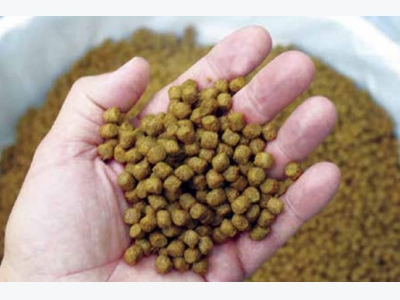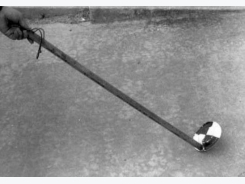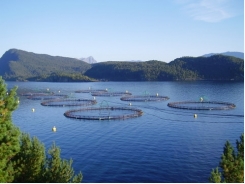Embodied Resource Use In Feed-Based Aquaculture

Summary:
In life cycle analysis of aquaculture, there is a danger of the entire array of embodied resources and impacts being assigned to the production facility. Producers have no control over the inefficiencies or impacts associated with feed production, but can help lessen resource use through good management practices. Improving feed conversion not only reduces resource use and impacts, but also lowers the amounts of nitro-gen and phosphorus discharged to the environment. Better feed conversion also lowers production costs.
Life cycle analysis (LCA) is becoming popular for accounting the total amount of resources used and the cumulative negative environmental impacts for producing and using products. In LCA, products are usually assessed “from cradle to grave.” A product is made, used and disposed of, with each step requiring resources and having impacts.
Several LCAs have been published for aquaculture products. They reveal much greater use of inputs for producing aquacul-ture products than those used at the farm level – even if the LCA is conducted only to the farm gate.
Much of the difference in use of resources estimated by LCA and the actual use of resources at the farm level results from what are called embodied, embedded or virtual resources used in pro-ducing the inputs used at the production facility. These embodied resources include water, land, nutrients, energy, equipment and other materials necessary to produce and use the farm-level inputs.
The LCA concept is an eloquent and technically correct way of assessing the total impacts of a product. However, in evaluat-ing the use of resources and impacts of aquaculture production, there is a danger of the entire array of embodied resources and impacts being assigned to the aquaculture production facility.
Catfish Feed, FCR Example
Feed production and use for ictalurid catfish farming in Ala-bama, USA, provides a good example of how embodied resources can influence overall resource use at the farm level. Each metric ton of feed for ictalurid catfish production in Ala-bama, has embodied in it 0.311 ha land, 314 m3 water and 27.8 kg nitrogen and 4.13 kg phosphorus from fertilizers that were used to produce the plant ingredients included in it. It also has 5.04 gigajoules (GJ) of embodied energy in processing feed ingredients, manufacturing and transportation. This does not include the embodied resources necessary for manufacturing the machinery and vehicles used in providing and using the feed.
At the farm, the producer uses feed, but has no control over the resources or impacts associated with its production and delivery. The only direct, farm-level energy use associated with ictalurid catfish feed is the small amount used in mechanical feed application. Of course, catfish farms also use energy for other purposes – mostly mechanical aeration.
The sum of resources used is much greater for total resources (embodied plus farm-level use) than for resources used directly on the farm (Table 1). Producers can have an important role in lessening the total amount of embodied resources consumed in aquaculture production up to the farm gate level.
Consider two ictalurid catfish farms, one whose fish produc-tion reflects an average feed-conversion ration (FCR) of 1.6 by virtue of good feed management and one that has an FCR of 2.3 because of overfeeding – a typical occurrence. Since catfish farms with different FCRs often have similar production, it will be assumed that both farms produce the average 6,000 kg/ha of fish per year typically achieved by catfish farms in Alabama. The actual farm-level contributions to embodied resource use in feed are illustrated for the two FCRs in Table 2. The reduction in resource use by decreasing the FCR from 2.3 to 1.6 is about 30%. The reductions per 0.1 unit improvement in FCR also are given in Table 2.
In addition to lessening the embodied resources and associ-ated impacts, reducing FCR also lowers the amounts of nitrogen and phosphorus discharged to the environment in farm effluent. Moreover, reduction in FCR lessens the amount of feed needed to produce a unit weight of fish, thereby lowering production costs. In the example in Table 2, 700 fewer kilograms of feed are needed to produce 1 mt of fish at an FCR of 2.3 than at 1.6. At current feed costs, this represents a savings of around U.S. $385/ mt fish produced.
Efficiency Benefits
The benefits of improving the efficiency of aquaculture pres-ent a “win-win” situation for both producers and conservation of resources and ecosystems. Nevertheless, some may see the embodied and direct use of resources for feed necessary for intensification of aquaculture as a reason to promote less-inten-sive aquaculture – especially aquaculture based on natural pro-ductivity in ponds. Of course, most of the species internationally traded are produced with feed and do not contribute a great deal to feeding the undernourished. However, the use of feeds for aquaculture species sold in domestic markets in developing countries is increasing.
The production of aquaculture must essentially double by 2050, and much of this increase will be in the culture of lower-trophic-level species for domestic markets in developing countries. But there is simply not enough land available to allow suf-ficient expansion of aquaculture based on natural productivity – even if productivity is stimulated by manure application or chemical fertilization. Thus, feed-based aquaculture is extending to pond culture of tilapia, carp and other lower-trophic-level species produced as a protein source for low-income families in developing countries.
According to the Alltech Global Feed Survey, 34.4 mmt of feed were used in aquaculture in 2012. At an average feed-conver-sion ratio for all species of 1.6, this equates to 21.5 mmt of pro-duction. The total production of species that potentially can be raised on feed was 51.5 mmt. This suggests that about two-thirds of the current production of species that can be reared on feed are indeed based on feeding. A similar estimate has been made by the Food and Agriculture Organization of the United Nations.
Perspectives
Unfortunately, intensification of aquaculture (and agricul-ture) is not a panacea that will assure plenty of food for the future. There may not be enough resources to allow production of the increasing quantity of food needed by the growing popu-lation. Moreover, the earth may not be able to absorb the accu-mulated impacts of this production and avoid changes in climate and ecosystems that will negatively affect both food production and human life.
The different sectors of the world food system, as well as the production of other human necessities, compete with each other for resources, so the culprit in resource use and ecosystem degra-dation is not food production per se, but the growing human population and its demands for goods and services.
There is urgent need to provide human necessities for the future using no more than or even fewer resources than those cur-rently used. Thus, the management practices necessary to assure efficiency in land, water, feed and energy use should be given highest priority in efforts to promote responsible aquaculture.
Editor’s Note: The authors of this article recently wrote Aquaculture, Resource Use and the Environment, a book published in February by Wiley-Blackwell. Embodied resource use, a major topic in the book, is a critical concept that is increasingly being used to evaluate food production system
Table 1. Direct use of resources at the farm level compared to the use of embodied resources for feeds to produce 1 mt of ictalurid catfish at a farm with 2.0 FCR and 6,000 kg/ha production.
| Resource | Direct Use | Embodied Use | Total Use |
| Land (ha)* | 0.208 | 0.595 | 0.803 |
| Water (m3)** | 3,000 | 682 | 3,682 |
| Energy (gigajoules) | 0.208 | 10.08 | 16.09 |
| Nitrogen (kg) | 0 | 27.8 | 27.8 |
| Phosphorus (kg) | 0 | 4.13 | 4.13 |
* Includes the farm area devoted to supporting a 1-ha water surface area
** Annual water use of 18,000 m3/ha
Table 2. Feed and embodied resource use in channel catfish production at 6,000 kg/ha at farms with different FCRs.
| Variable | Feed-Conversion Ratio | Embodied Resource Use (%/0.1 FCR improvement) | |
| 2.3 | 1.6 | ||
| Feed use (kg/mt fish) | 2,300 | 1,600 | -100 |
| Embodied resources | |||
| Land (ha/mt fish) | 0.715 | 0.500 | -0.031 |
| Water (m3/t fish) | 722.0 | 502.0 | -31.4 |
| Energy (GJ/mt fish) | 11.59 | 8.06 | -0.50 |
| Nitrogen (kg/mt fish) | 63.90 | 44.50 | -2.80 |
| Phosphorus (kg/mt fish) | 9.90 | 6.60 | -0.47 |
Có thể bạn quan tâm
Phần mềm

Phối trộn thức ăn chăn nuôi

Pha dung dịch thủy canh

Định mức cho tôm ăn

Phối trộn phân bón NPK

Xác định tỷ lệ tôm sống

Chuyển đổi đơn vị phân bón

Xác định công suất sục khí

Chuyển đổi đơn vị tôm

Tính diện tích nhà kính

Tính thể tích ao hồ



 Drying, Liming, Other Treatments Disinfect Pond Bottoms
Drying, Liming, Other Treatments Disinfect Pond Bottoms  Interpretation of Water Analysis Reports for Fish Culture
Interpretation of Water Analysis Reports for Fish Culture